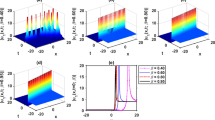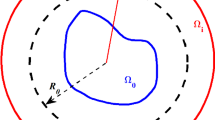Abstract
It is known that there exist obivious differences between the two most commonly used definitions of fractional derivatives-Riemann-Liouville (R-L) definition and Caputo definition. The multiple definitions of fractional derivatives in fractional calculus have hindered the application of fractional calculus in rheology. In this paper, we clarify that the R-L definition and Caputo definition are both rheologically imperfect with the help of mechanical analogues of the fractional element model (Scott-Blair model). We also clarify that to make them perfect rheologically, the lower terminals of both definitions should be put to −∞. We further prove that the R-L definition with lower terminal a → −∞ and the Caputo definition with lower terminal a → −∞ are equivalent in the differentiation of functions that are smooth enough and functions that have finite number of singular points. Thus we can define the fractional derivatives in rheology as the R-L derivatives with lower terminal a → −∞ (or, equivalently, the Caputo derivatives with lower terminal a → −∞) not only for steady-state processes, but also for transient processes. Based on the above definition, the problems of composition rules of fractional operators and the initial conditions for fractional differential equations are discussed, respectively. As an example we study a fractional oscillator with Scott-Blair model and give an exact solution of this equation under given initial conditions.
Similar content being viewed by others
References
Hilfer, R.: Applications of Fractional Calculus in Physics. World Scientific Press, Singapore (2000)
Qi, H., Xu, M.: Stokes’ first problem for a viscoelastic fluid with the generalized Oldroyd-B model. Acta Mech. Sin. 23, 463–469 (2007)
Tong, D., Zhang, X., Zhang, X.: Unsteady helical flows of a generalized Oldroyd-B fluid. J. Non-Newtonian Fluid Mech. 156, 75–83 (2009)
Yang, P., Lam, Y.C., Zhu, K.Q.: Constitutive equation with fractional derivatives for the generalized UCM model. J. Non-Newtonian Fluid Mech. 165, 88–97 (2010)
Scott-Blair, G.W.: The role of psychophysics in rheology. J. Colloid Sciences 2, 21–32 (1947)
Schiessel, H., Metzler, R., Blumen, A., et al.: Generalized viscoelastic models: their fractional equations with solutions. J. Phys. A: Math. Gen. 28, 6567–6584 (1995)
Hernández-Jiménez, A., Hernández-Santiag, J., Macias-García, A., et al.: Relaxation modulus in PMMA and PTFE fitting by fractional Maxwell model. Polym. Test. 21, 325–331 (2002)
Meral, F.C., Royston, T.J., Magin, R.: Fractional calculus in viscoelasticity: an experimental study. Commun. Nonlinear Sci. Numer. Simulat. 15, 939–945 (2010)
Podlubny, I.: Fractional Differential Equations. Academic Press (1999)
Caputo, M.: Linear models of dissipation whose Q is almost frequency independent—II. Geophys. J. R. Astr. Soc. 13, 529–539 (1967)
Ochmann, M., Makarov, S.: Representation of the absorption of nonlinear waves by fractional derivatives. J. Acoust. Soc. Amer. 94, 3392–3399 (1993)
Heymans, N., Bauwens, J.C.: Fractal rheological models and fractional differential equations for viscoelastic behavior. Rheol. Acta 33, 210–219 (1994)
Heymans, N.: Hierarchical models for viscoelasticity dynamic behavior in the linear range. Rheol. Acta 35, 508–519 (1996)
Hu, K.X., Zhu, K.Q.: Mechanical analogies of fractional elements. Chin. Phys. Lett. 26, 108301 (2009)
Schiessel, H., Blumen A.: Hierarchical analogues to fractional relaxation equations. J. Phys. A: Math. Gen. 26, 5057–5069 (1993)
Lundberg, H.K., Miller, H.R., Trumper, D.L.: Initial conditions, generalized functions, and the Laplace transform: troubles at the origin. IEEE Control Syst. Mag. 27, 22–35 (2007)
Kanwal, R.P.: Generalized Functions: Theory and Technique. Academic Press (1983)
Oldham, K.B., Spanier, J.: The Fractional Calculus-Theory and Applications of Differentiation and Integration to Arbitrary Order. Academic Press (1974)
Author information
Authors and Affiliations
Corresponding author
Additional information
The project was supported by the National Natural Science Foundation of China (10972117).
Rights and permissions
About this article
Cite this article
Yang, F., Zhu, KQ. A note on the definition of fractional derivatives applied in rheology. Acta Mech Sin 27, 866–876 (2011). https://doi.org/10.1007/s10409-011-0526-9
Received:
Revised:
Accepted:
Published:
Issue Date:
DOI: https://doi.org/10.1007/s10409-011-0526-9




